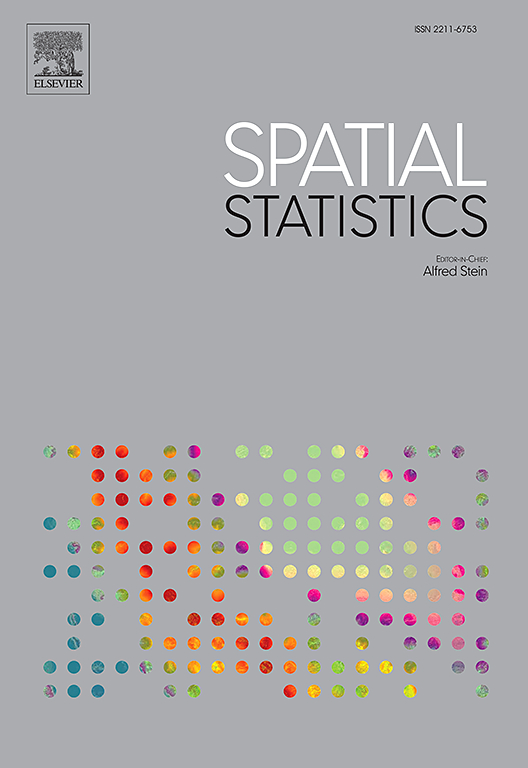Computationally efficient spatio-temporal disease mapping for big data
IF 2.5
2区 数学
Q3 GEOSCIENCES, MULTIDISCIPLINARY
引用次数: 0
Abstract
Disease mapping models estimate the spatio-temporal variation in population-level disease risks or rates across a set of areal units for time periods, aiming to identify temporal trends and spatial hotspots. Highly parameterised Bayesian hierarchical models with over random effects are commonly used to estimate this spatio-temporal variation, which are assigned autoregressive and conditional autoregressive prior distributions. These models work well when there are tens of thousands of data points, but are likely to be computationally burdensome when this rises to hundreds of thousands or above. This paper proposes a computationally efficient alternative, which can fit a range of spatio-temporal disease trends almost as well as existing highly parameterised models but only takes around 5% to 40% of the time to implement. It achieves this by modelling the average spatial and temporal trends in the data with autoregressive type random effects, which are augmented by an observation-driven process using functions of earlier data as additional covariates in the model. The efficacy of this methodology is tested by simulation, before being applied to the motivating study that estimates the spatio-temporal trends in asthma, cancer, coronary heart and chronic obstructive pulmonary disease prevalences for small areas over years in England.
面向大数据的高效时空疾病制图
疾病制图模型估算了N个时间段内K个面积单位的人群水平疾病风险或发病率的时空变化,旨在确定时间趋势和空间热点。具有超过KN随机效应的高参数化贝叶斯层次模型通常用于估计这种时空变化,该模型被分配为自回归和条件自回归先验分布。当有数以万计的数据点时,这些模型工作得很好,但当数据点增加到数十万或更多时,计算负担可能会很重。本文提出了一种计算效率高的替代方案,它可以拟合一系列时空疾病趋势,几乎和现有的高度参数化模型一样,但只需要大约5%到40%的时间来实现。它通过用自回归型随机效应对数据中的平均空间和时间趋势进行建模来实现这一点,这些趋势通过使用早期数据的函数作为模型中的附加协变量的观测驱动过程来增强。该方法的有效性通过模拟测试,然后应用于一项激励研究,该研究估计了英国K=32,751个小地区在N=13年内哮喘、癌症、冠心病和慢性阻塞性肺病患病率的时空趋势。
本文章由计算机程序翻译,如有差异,请以英文原文为准。
求助全文
约1分钟内获得全文
求助全文
来源期刊

Spatial Statistics
GEOSCIENCES, MULTIDISCIPLINARY-MATHEMATICS, INTERDISCIPLINARY APPLICATIONS
CiteScore
4.00
自引率
21.70%
发文量
89
审稿时长
55 days
期刊介绍:
Spatial Statistics publishes articles on the theory and application of spatial and spatio-temporal statistics. It favours manuscripts that present theory generated by new applications, or in which new theory is applied to an important practical case. A purely theoretical study will only rarely be accepted. Pure case studies without methodological development are not acceptable for publication.
Spatial statistics concerns the quantitative analysis of spatial and spatio-temporal data, including their statistical dependencies, accuracy and uncertainties. Methodology for spatial statistics is typically found in probability theory, stochastic modelling and mathematical statistics as well as in information science. Spatial statistics is used in mapping, assessing spatial data quality, sampling design optimisation, modelling of dependence structures, and drawing of valid inference from a limited set of spatio-temporal data.
 求助内容:
求助内容: 应助结果提醒方式:
应助结果提醒方式:


